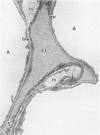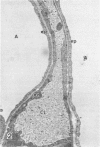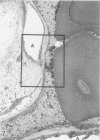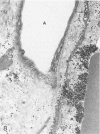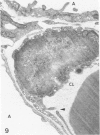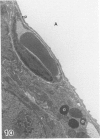Abstract
Studies of ethchlorvynol (ECV)-induced pulmonary edema were undertaken for determination of the structural basis of increased microvascular permeability. Rats were administered an intravenous bolus dose of 15 mg/kg ECV and killed at time intervals between 5 minutes and 72 hours. Oyster glycogen and ferritin were used as permeability probes for identification of the sites of altered microvascular permeability. Edema fluid containing ferritin begins to accumulate in the alveolar interstitium 10 minutes after EVC . Thirty minutes after ECV, marked intersitial edema fluid is present containing both permeability probes. The absence of any appreciable transendothelial movement of either probe via vesicles and the presence of open endothelial junctions led the authors to propose the latter as the principal determinant of the increase in permeability. In addition to open endothelial junctions, prominent subendothelial blebs occur. These blebs develop in an otherwise intact endothelium and increase in frequency and size with time following their appearance at 10 minutes. Ferritin and glycogen progressively accumulate within the blebs. At 15 minutes the concentration of ferritin in blebs appears to equal that in plasma, whereas glycogen is absent or sparsely present in a few blebs. At 60 minutes both permeability probes have become concentrated in the blebs. The mechanism of formation of the blebs and concentration in them of the permeability probes cannot yet be specified. The lesion caused by ECV is completely reversible, so that by 72 hours after ECV there is complete resolution of interstitial edema, disappearance of the subendothelial blebs, and closure of endothelial junctions. A small amount of exudate remaining in the alveoli is cleared by 72 hours.
Full text
PDF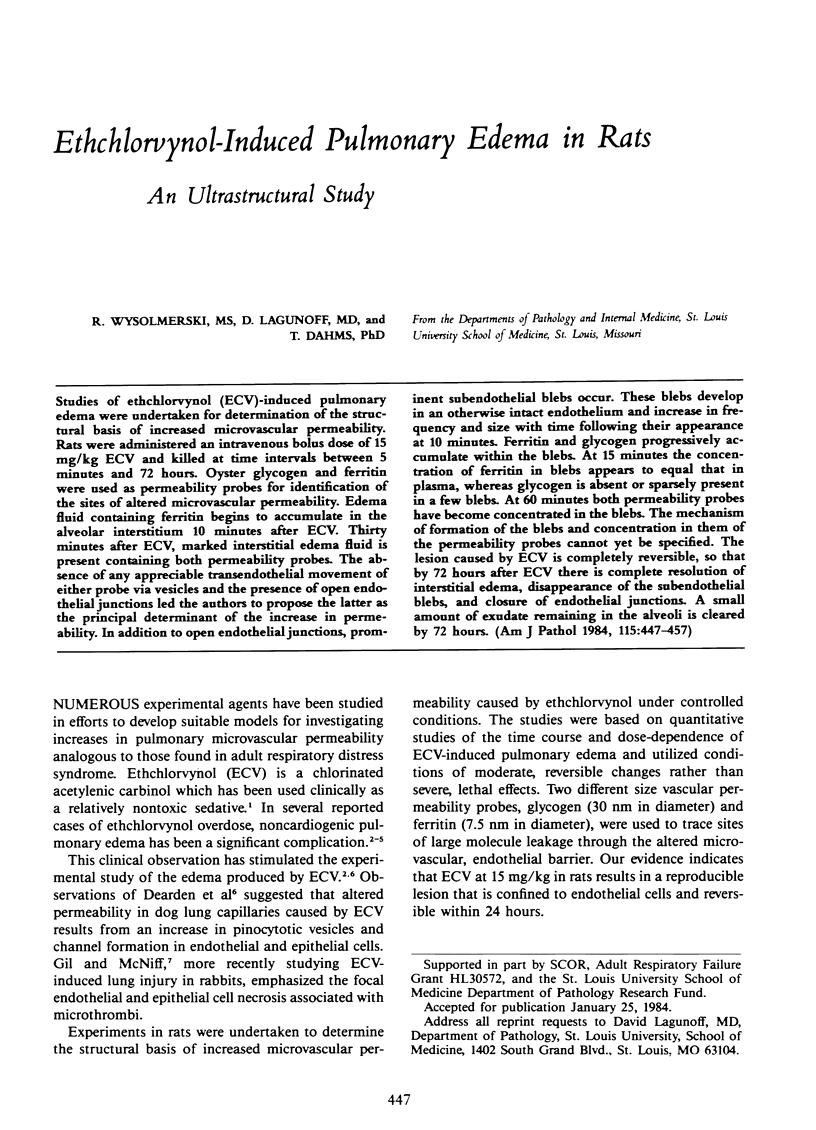
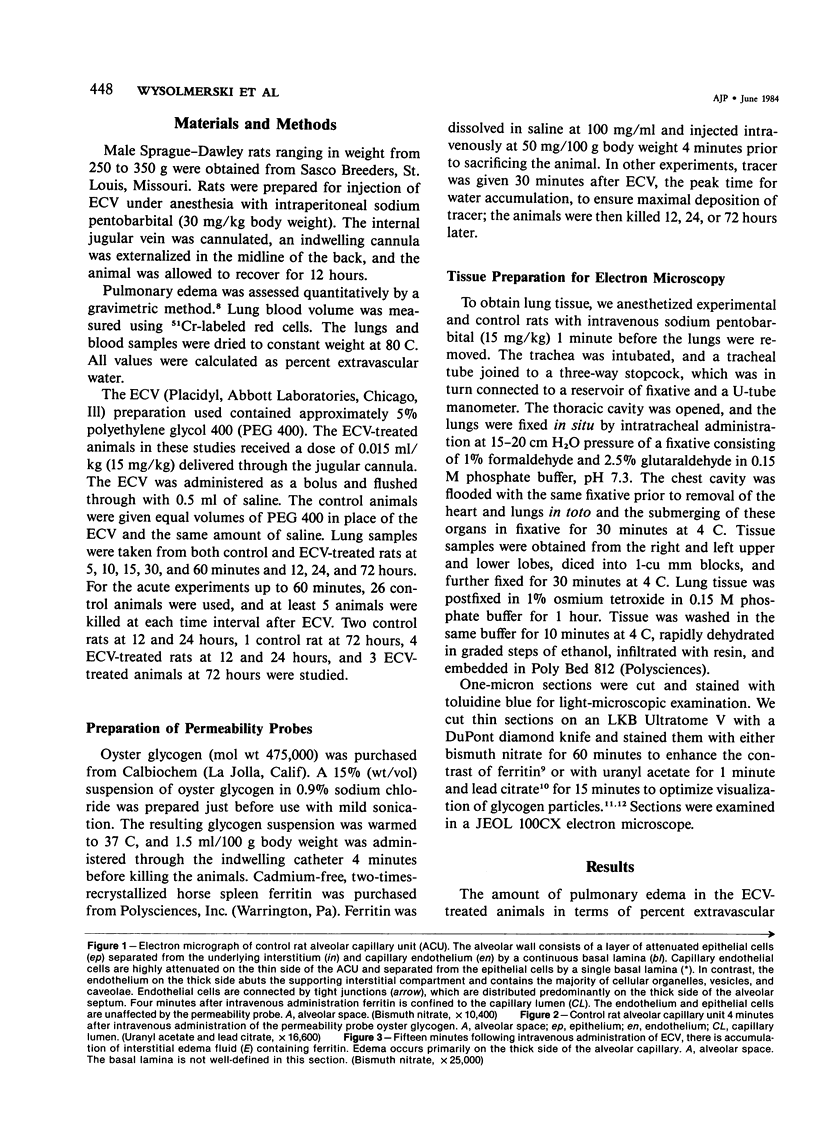
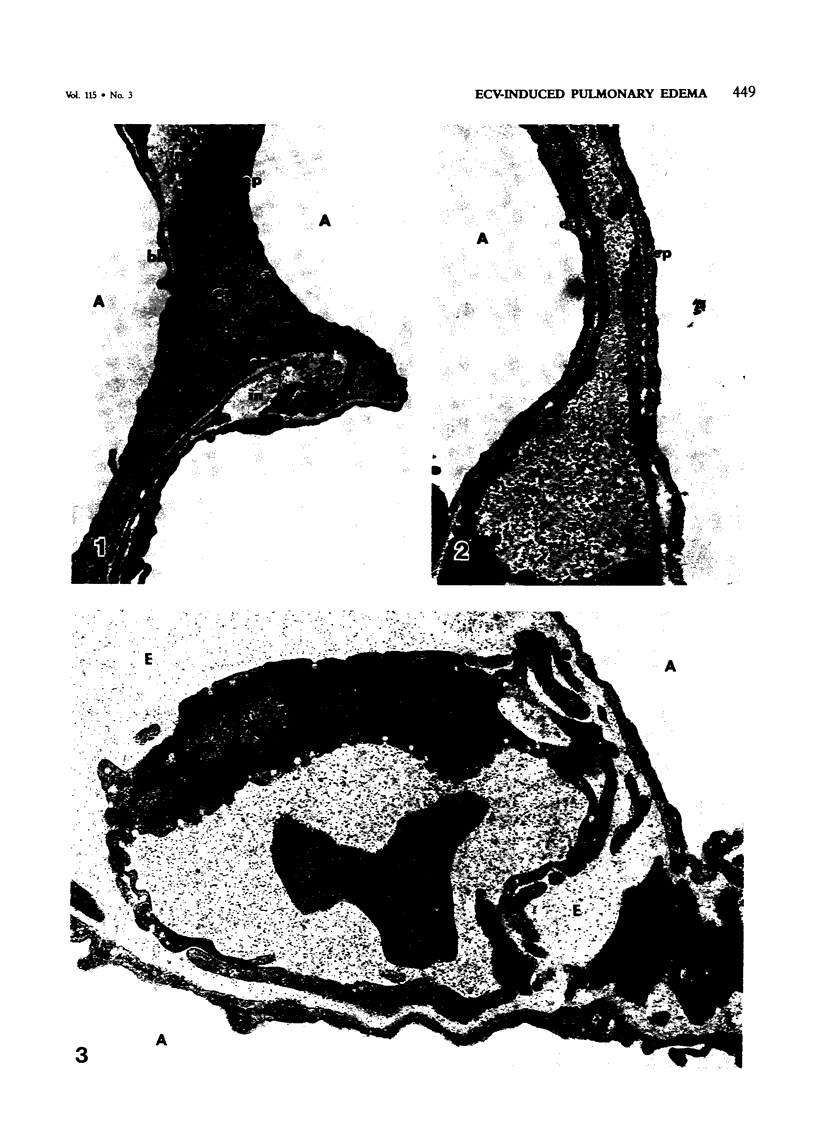
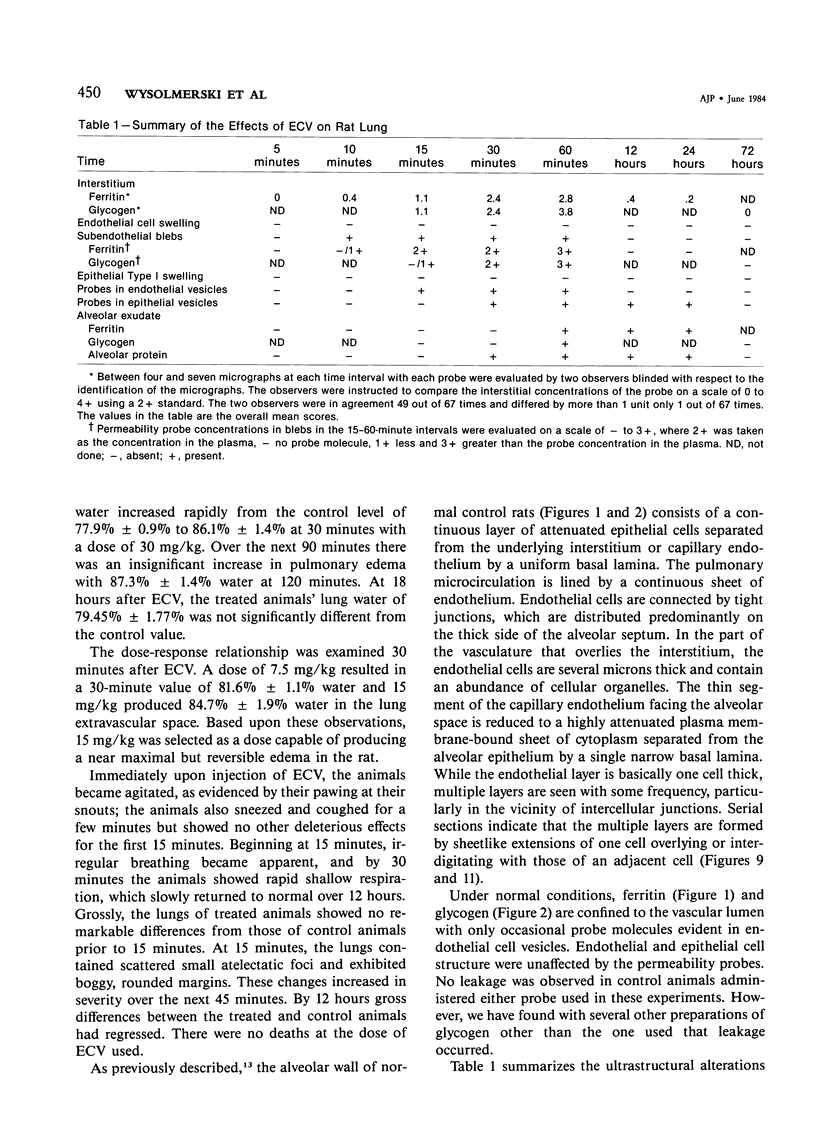
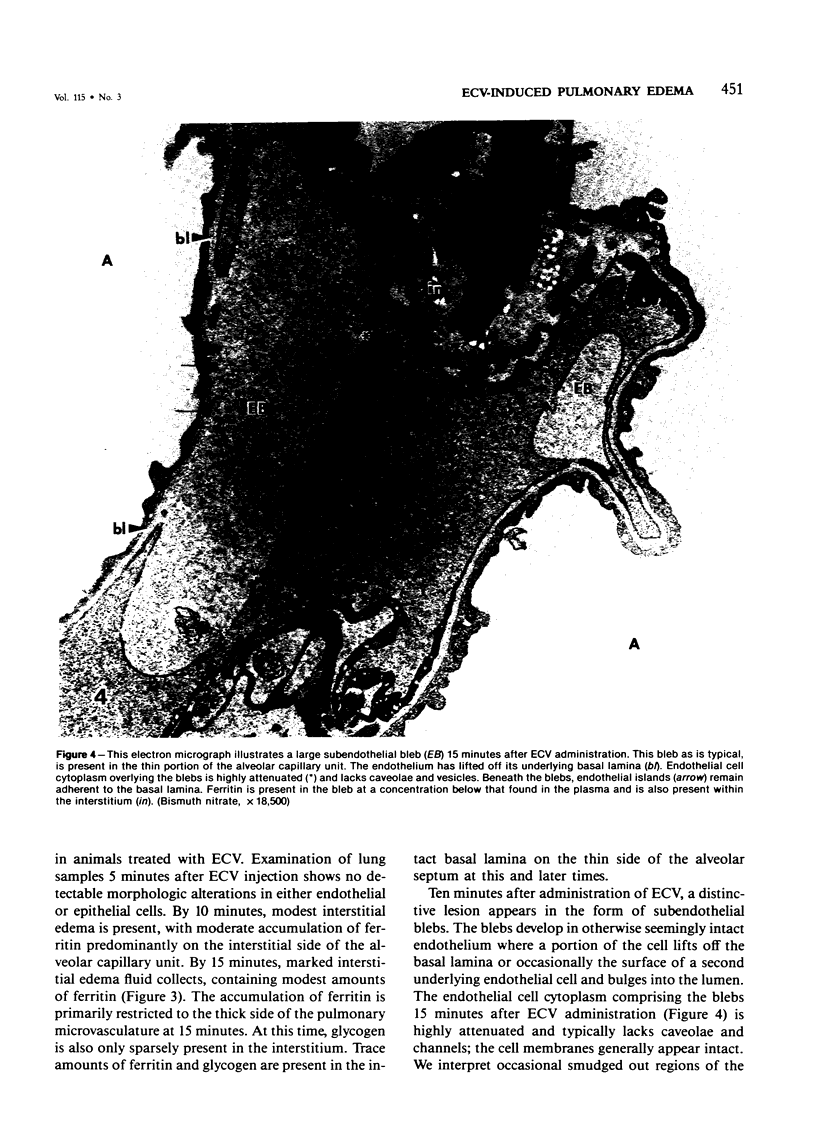
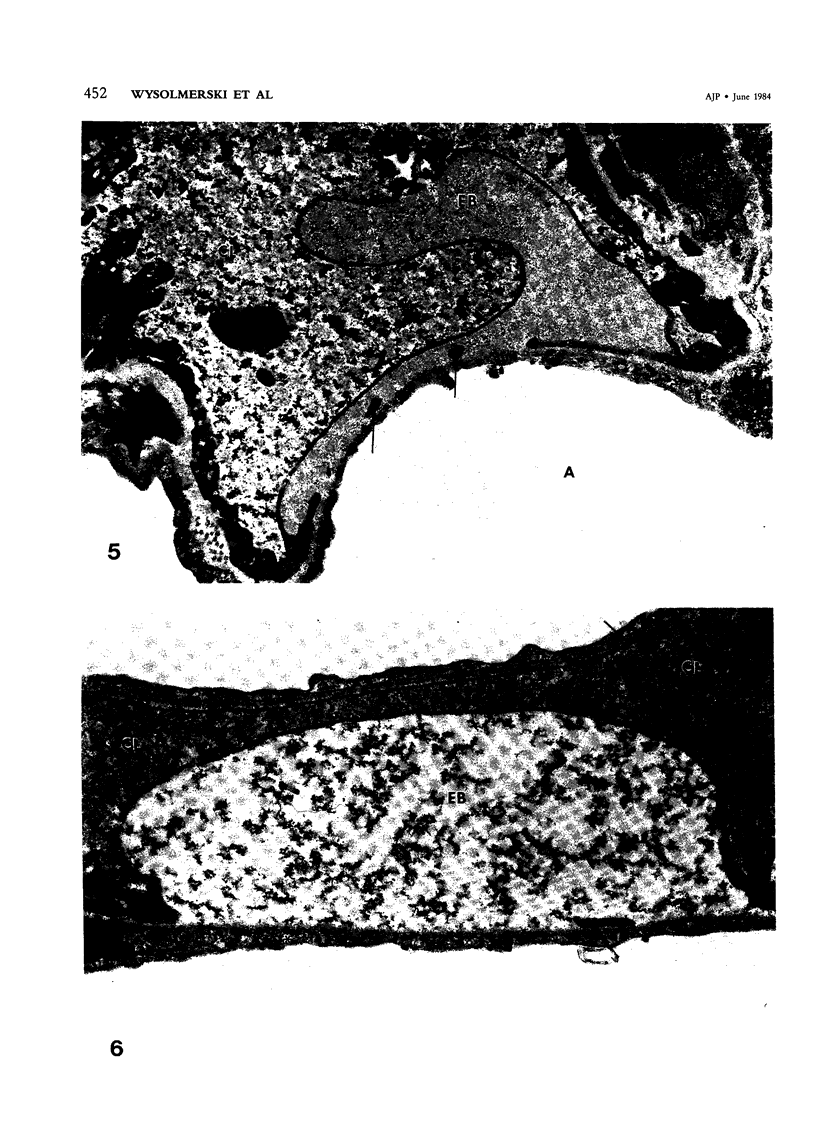
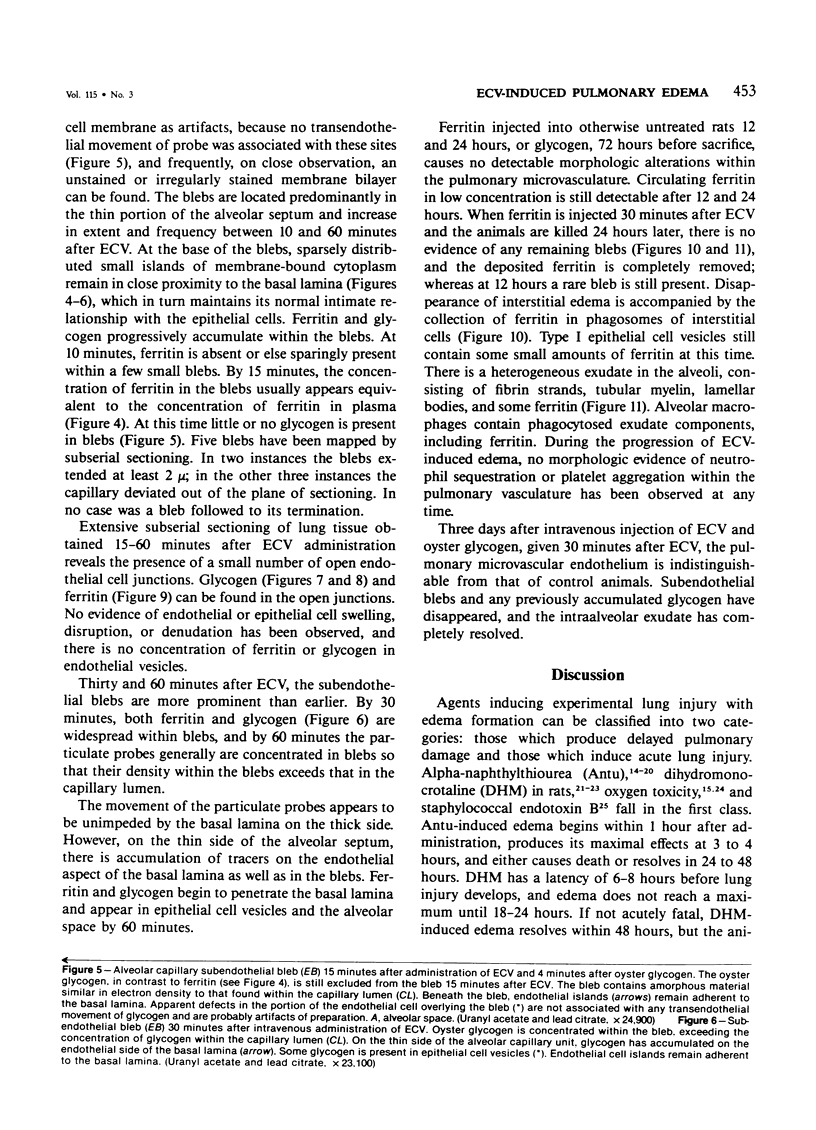
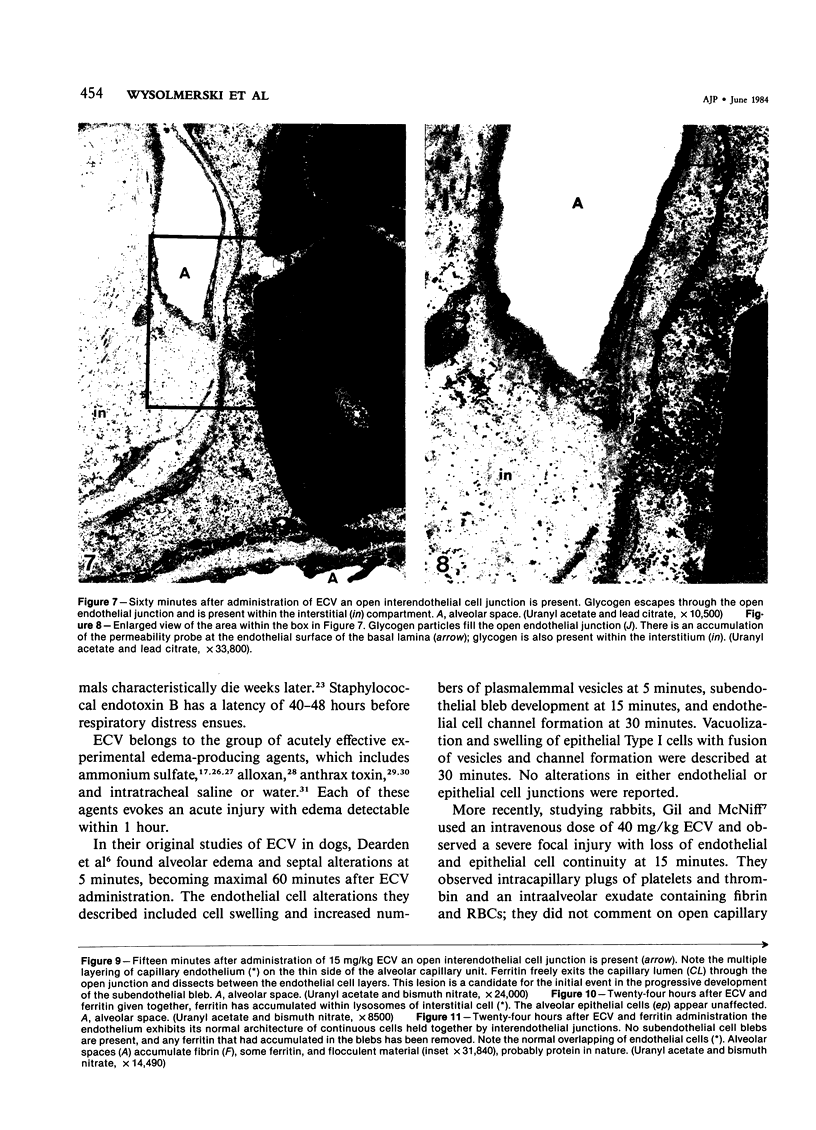
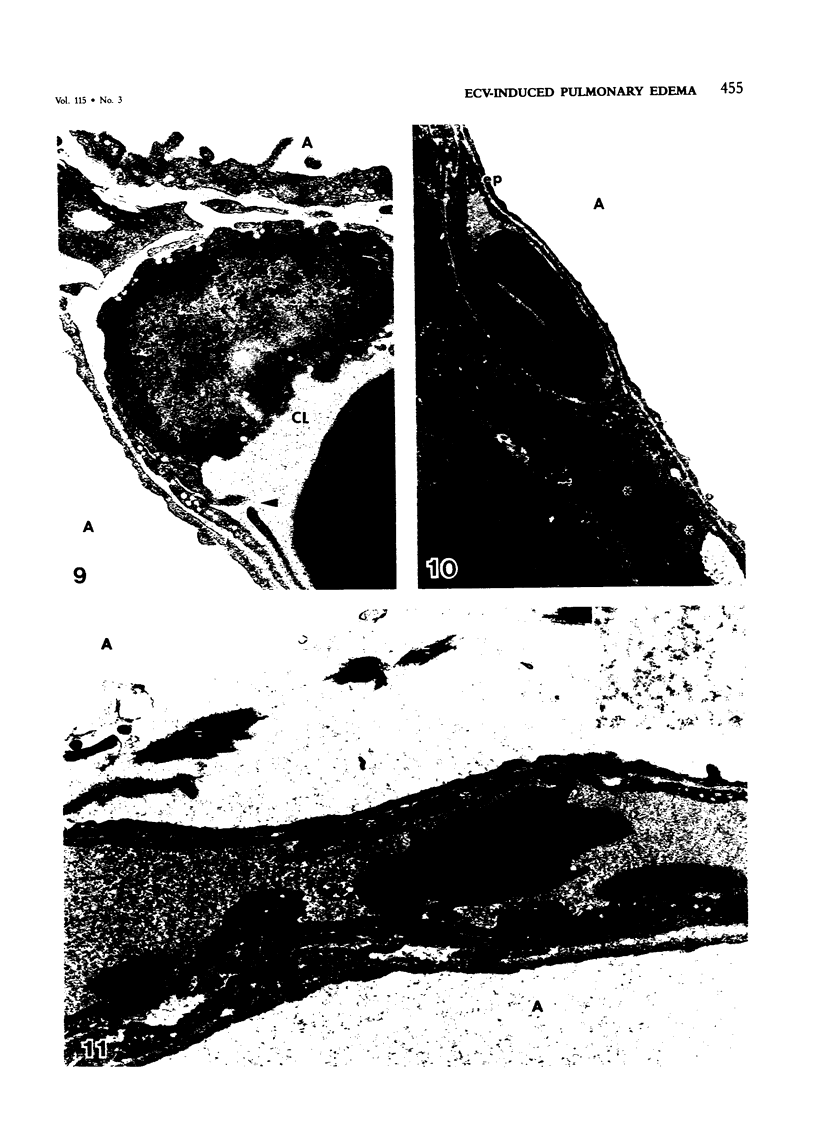
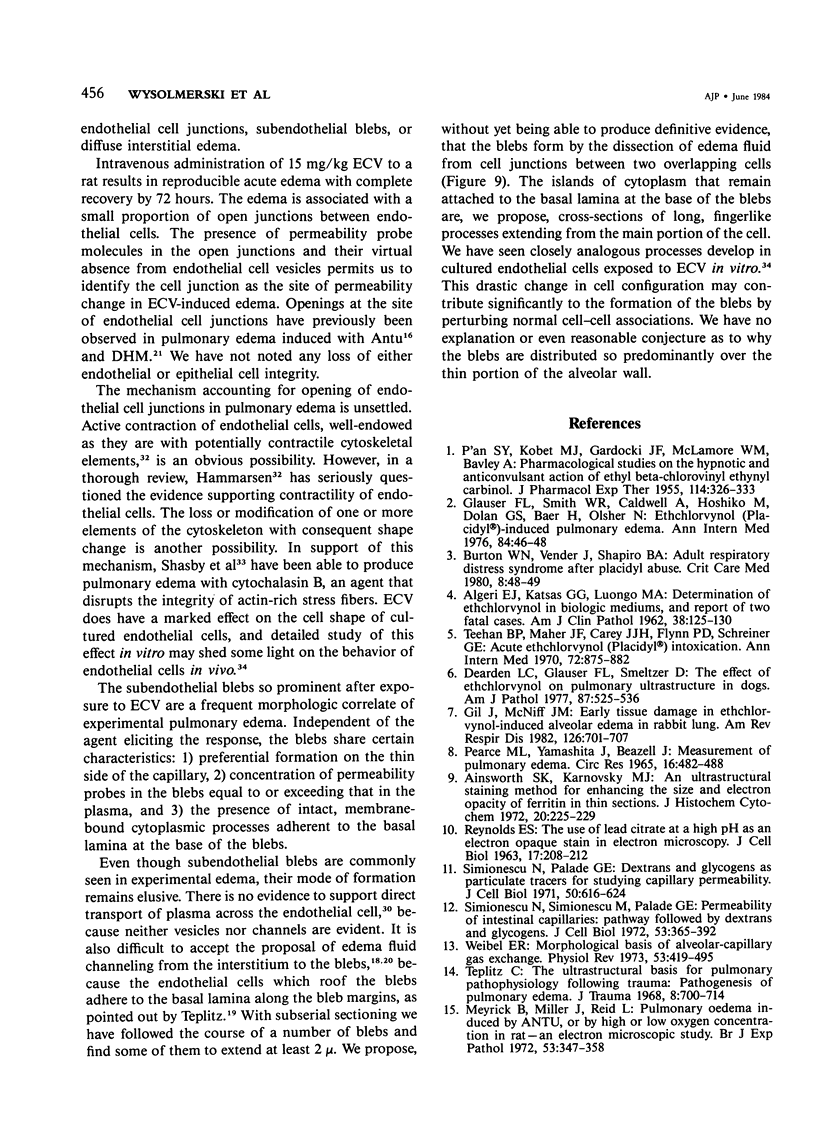
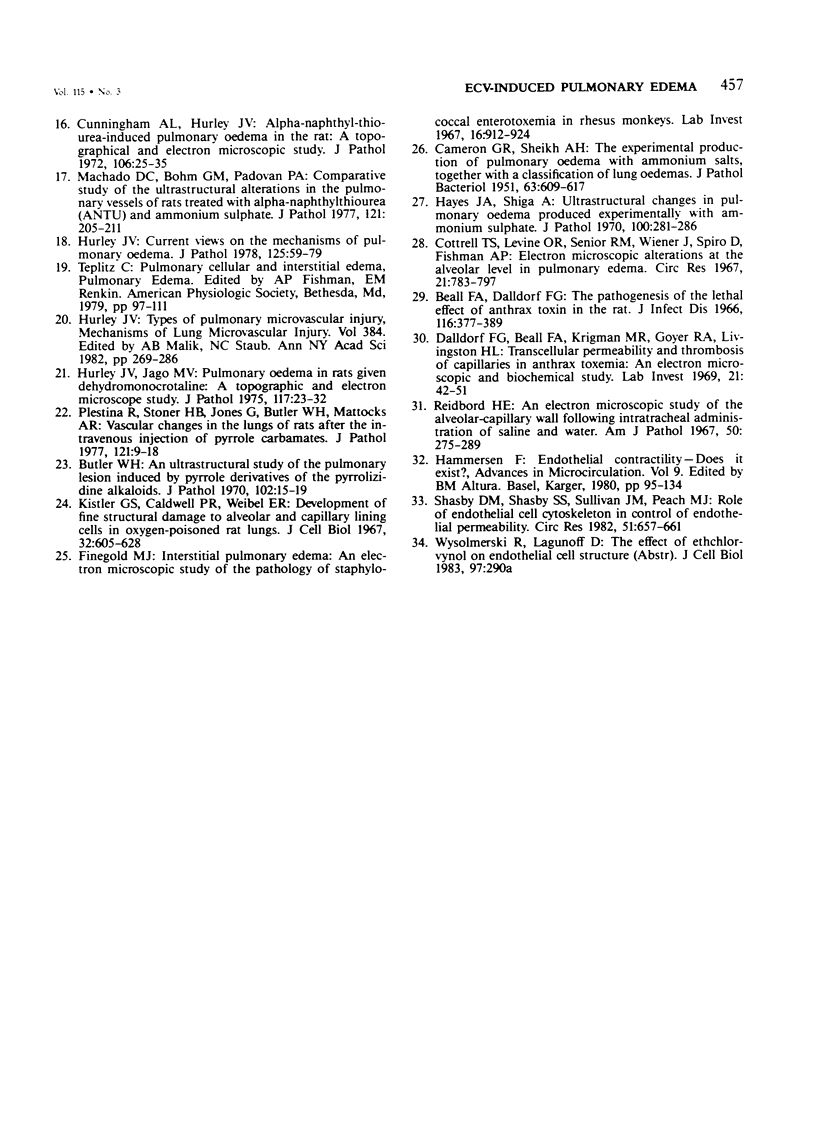
Images in this article
Selected References
These references are in PubMed. This may not be the complete list of references from this article.
- ALGERI E. J., KATSAS G. G., LUONGO M. A. Determination of ethchlorvynol in biologic mediums, and report of two fatal cases. Am J Clin Pathol. 1962 Aug;38:125–130. doi: 10.1093/ajcp/38.2.125. [DOI] [PubMed] [Google Scholar]
- Ainsworth S. K., Karnovsky M. J. An ultrastructural staining method for enhancing the size and electron opacity of ferritin in thin sections. J Histochem Cytochem. 1972 Mar;20(3):225–229. doi: 10.1177/20.3.225. [DOI] [PubMed] [Google Scholar]
- Beall F. A., Dalldorf F. G. The pathogenesis of the lethal effect of anthrax toxin in the rat. J Infect Dis. 1966 Jun;116(3):377–389. doi: 10.1093/infdis/116.3.377. [DOI] [PubMed] [Google Scholar]
- Burton W. N., Vender J., Shapiro B. A. Adult respiratory distress syndrome after Placidyl abuse. Crit Care Med. 1980 Jan;8(1):48–49. doi: 10.1097/00003246-198001000-00009. [DOI] [PubMed] [Google Scholar]
- Butler W. H. An ultrastructural study of the pulmonary lesion induced by pyrrole derivatives of the pyrrolizidine alkaloids. J Pathol. 1970 Sep;102(1):15–19. doi: 10.1002/path.1711020104. [DOI] [PubMed] [Google Scholar]
- CAMERON G. R., SHEIKH A. H. The experimental production of pulmonary oedema with ammonium salts, together with a classification of lung oedema. J Pathol Bacteriol. 1951 Oct;63(4):609–617. doi: 10.1002/path.1700630407. [DOI] [PubMed] [Google Scholar]
- Cottrell T. S., Levine O. R., Senior R. M., Wiener J., Spiro D., Fishman A. P. Electron microscopic alterations at the alveolar level in pulmonary edema. Circ Res. 1967 Dec;21(6):783–797. doi: 10.1161/01.res.21.6.783. [DOI] [PubMed] [Google Scholar]
- Cunningham A. L., Hurley J. V. Alpha-naphthyl-thiourea-induced pulmonary oedema in the rat: a topographical and electron-microscope study. J Pathol. 1972 Jan;106(1):25–35. doi: 10.1002/path.1711060103. [DOI] [PubMed] [Google Scholar]
- Dearden L. C., Glauser F. L., Smeltzer D. The effect of ethchlorvynol on pulmonary ultrastructure in dogs. Am J Pathol. 1977 Jun;87(3):525–536. [PMC free article] [PubMed] [Google Scholar]
- Finegold M. J. Interstitial pulmonary edema. An electron microscopic study of the pathology of staphylococcal enterotoxemia in Rhesus monkeys. Lab Invest. 1967 Jun;16(6):912–924. doi: 10.21236/ad0811615. [DOI] [PubMed] [Google Scholar]
- Gil J., McNiff J. M. Early tissue damage in ethchlorvynol-induced alveolar edema in rabbit lung. Am Rev Respir Dis. 1982 Oct;126(4):701–707. doi: 10.1164/arrd.1982.126.4.701. [DOI] [PubMed] [Google Scholar]
- Glauser F. L., Smith W. R., Caldwell A., Hoshiko M., Dolan G. S., Baer H., Olsher N. Ethchlorvynol (Placidyl)-induced pulmonary edema. Ann Intern Med. 1976 Jan;84(1):46–48. doi: 10.7326/0003-4819-84-1-46. [DOI] [PubMed] [Google Scholar]
- Hayes J. A., Shiga A. Ultrastructural changes in pulmonary oedema produced experimentally with ammonium sulphate. J Pathol. 1970 Apr;100(4):281–286. doi: 10.1002/path.1711000407. [DOI] [PubMed] [Google Scholar]
- Hurley J. V. Current views on the mechanisms of pulmonary oedema. J Pathol. 1978 Jun;125(2):59–79. doi: 10.1002/path.1711250202. [DOI] [PubMed] [Google Scholar]
- Hurley J. V., Jago M. V. Pulmonary oedema in rats given dehydromonocrotaline: a topographic and electron-microscope study. J Pathol. 1975 Sep;117(1):23–32. doi: 10.1002/path.1711170104. [DOI] [PubMed] [Google Scholar]
- Kistler G. S., Caldwell P. R., Weibel E. R. Development of fine structural damage to alveolar and capillary lining cells in oxygen-poisoned rat lungs. J Cell Biol. 1967 Mar;32(3):605–628. doi: 10.1083/jcb.32.3.605. [DOI] [PMC free article] [PubMed] [Google Scholar]
- Machado D. C., Böhm G. M., Padovan P. A. Comparative study of the ultrastructural alterations in the pulmonary vessels of rats treated with alpha-naphthylthiourea (ANTU) and ammonium sulphate. J Pathol. 1977 Apr;121(4):205–211. doi: 10.1002/path.1711210403. [DOI] [PubMed] [Google Scholar]
- Meyrick B., Miller J., Reid L. Pulmonary oedema induced by ANTU, or by high or low oxygen concentrations in rat--an electron microscopic study. Br J Exp Pathol. 1972 Aug;53(4):347–358. [PMC free article] [PubMed] [Google Scholar]
- P'AN S. Y., KODET M. J., GARDOCKI J. F., McLAMORE W. M., BAVLEY A. Pharmacological studies on the hypnotic and anticonvulsant actions of ethyl beta-chlorovinyl ethynyl carbinol. J Pharmacol Exp Ther. 1955 Jul;114(3):326–333. [PubMed] [Google Scholar]
- PEARCE M. L., YAMASHITA J., BEAZELL J. MEASUREMENT OF PULMONARY EDEMA. Circ Res. 1965 May;16:482–488. doi: 10.1161/01.res.16.5.482. [DOI] [PubMed] [Google Scholar]
- Plestina R., Stoner H. B., Jones G., Butler W. H., Mattocks A. R. Vascular changes in the lungs of rats after the intravenous injection of pyrrole carbamates. J Pathol. 1977 Jan;121(1):9–18. doi: 10.1002/path.1711210103. [DOI] [PubMed] [Google Scholar]
- REYNOLDS E. S. The use of lead citrate at high pH as an electron-opaque stain in electron microscopy. J Cell Biol. 1963 Apr;17:208–212. doi: 10.1083/jcb.17.1.208. [DOI] [PMC free article] [PubMed] [Google Scholar]
- Reidbord H. E. An electron microscopic study of the alveolar-capillary wall following intratracheal administration of saline and water. Am J Pathol. 1967 Feb;50(2):275–289. [PMC free article] [PubMed] [Google Scholar]
- Shasby D. M., Shasby S. S., Sullivan J. M., Peach M. J. Role of endothelial cell cytoskeleton in control of endothelial permeability. Circ Res. 1982 Nov;51(5):657–661. doi: 10.1161/01.res.51.5.657. [DOI] [PubMed] [Google Scholar]
- Simionescu N., Palade G. E. Dextrans and glycogens as particulate tracers for studying capillary permeability. J Cell Biol. 1971 Sep;50(3):616–624. doi: 10.1083/jcb.50.3.616. [DOI] [PMC free article] [PubMed] [Google Scholar]
- Simionescu N., Simionescu M., Palade G. E. Permeability of intestinal capillaries. Pathway followed by dextrans and glycogens. J Cell Biol. 1972 May;53(2):365–392. doi: 10.1083/jcb.53.2.365. [DOI] [PMC free article] [PubMed] [Google Scholar]
- Teehan B. P., Maher J. F., Carey J. J., Flynn P. D., Schreiner G. E. Acute ethchlorvynol (Placidyl) intoxication. Ann Intern Med. 1970 Jun;72(6):875–882. doi: 10.7326/0003-4819-72-6-875. [DOI] [PubMed] [Google Scholar]
- Teplitz C. The ultrastructural basis for pulmonary pathophysiology following trauma. Pathogenesis of pulmonary edema. J Trauma. 1968 Sep;8(5):700–714. doi: 10.1097/00005373-196809000-00009. [DOI] [PubMed] [Google Scholar]
- Weibel E. R. Morphological basis of alveolar-capillary gas exchange. Physiol Rev. 1973 Apr;53(2):419–495. doi: 10.1152/physrev.1973.53.2.419. [DOI] [PubMed] [Google Scholar]



